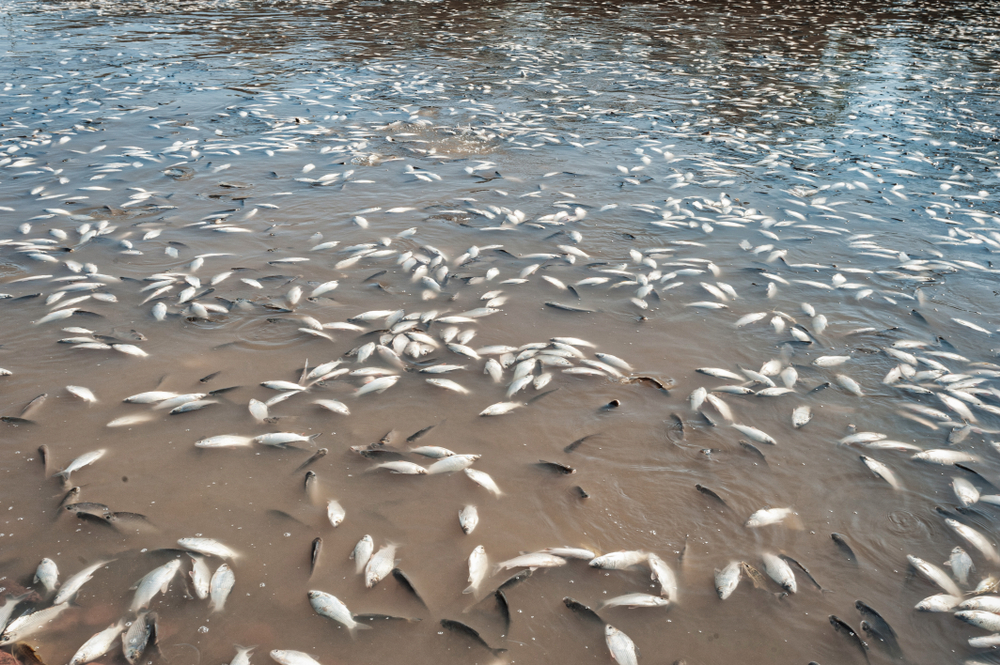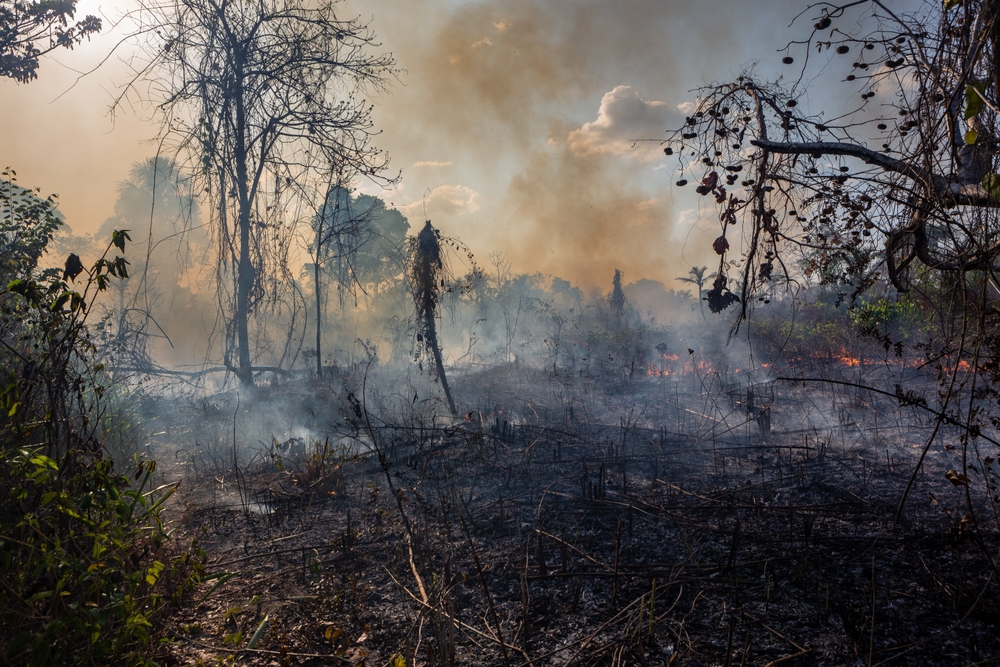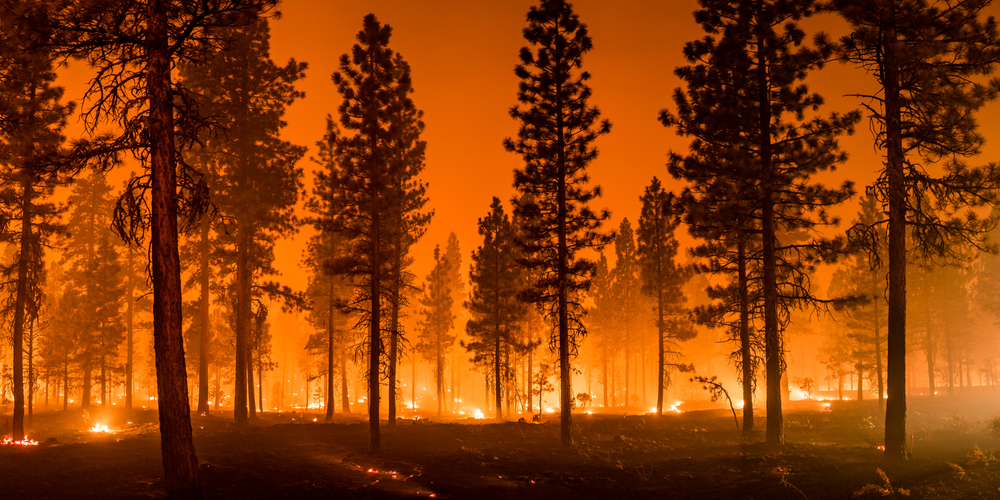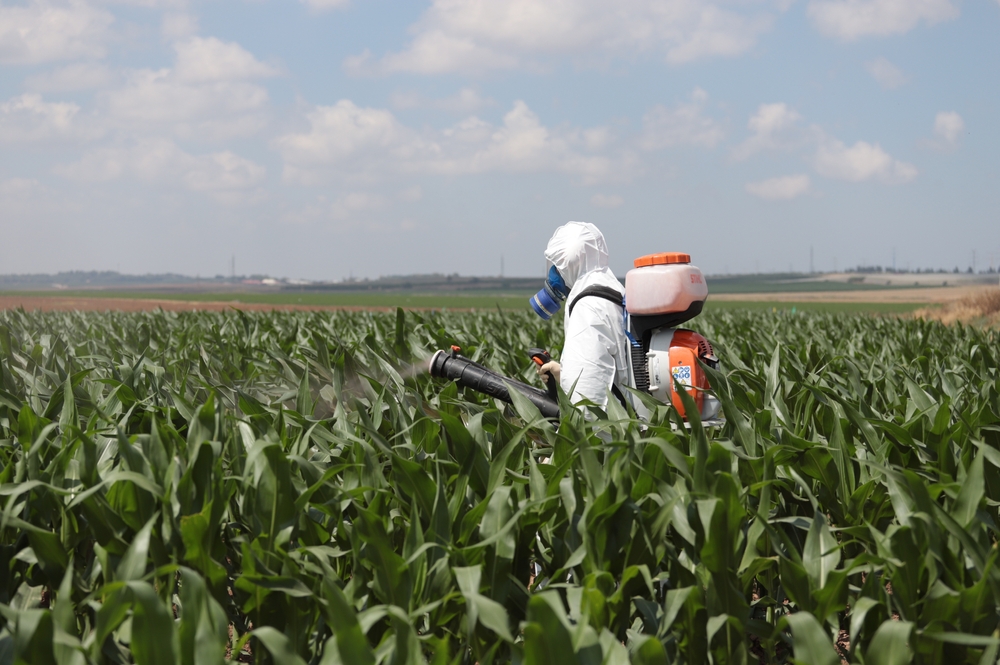As climate change continues to impact our planet, it doesn’t just affect the environment—it has far-reaching consequences for human health. One of the most concerning links is between climate change, the spread of toxic chemicals, and the rise of serious diseases. Rising temperatures, air pollution, and environmental degradation are all playing a role in increasing exposure to hazardous chemicals, which in turn is contributing to a spike in various diseases. Below, we explore 12 alarming connections between climate change, toxic chemicals, and serious health conditions.
1. Air Pollution And Respiratory Diseases

Climate change exacerbates air pollution, which leads to an increase in respiratory diseases like asthma, bronchitis, and chronic obstructive pulmonary disease (COPD). Rising temperatures cause more ground-level ozone, a key component of smog, which aggravates lung conditions. Additionally, wildfires, which are becoming more frequent due to climate change, release harmful chemicals like particulate matter into the air, further deteriorating air quality. As a result, more people are exposed to toxic air pollutants that damage their respiratory system, leading to long-term health issues.
People living in areas with poor air quality, especially children and the elderly, are at a higher risk of developing chronic respiratory diseases. This growing air pollution problem is not only caused by industrial emissions but also by the increased frequency and intensity of wildfires, which release carcinogenic chemicals into the air. Over time, this continual exposure to harmful air particles can trigger serious, sometimes fatal, health conditions. The combination of these factors accelerates the health impacts, shaving years off life expectancy. According to PMC, climate change increases exposure to risk factors for respiratory diseases, including ozone and particulate matter, which exacerbate conditions like asthma and COPD.
2. Water Contamination And Cancer Risks

Climate change contributes to water contamination in several ways, including the increased likelihood of floods and droughts, which disrupt water sources and sewage systems. These environmental shifts lead to the release of toxic chemicals such as pesticides, heavy metals, and industrial waste into drinking water supplies. Prolonged exposure to contaminated water can significantly increase the risk of cancer, particularly cancers of the liver, bladder, and kidneys, as toxic substances like arsenic and mercury accumulate in the body.
As water sources become more polluted due to flooding or water scarcity, harmful chemicals may persist in the ecosystem for extended periods, affecting not just drinking water but also food sources. Contaminated water supplies can also lead to reproductive and developmental issues, further exacerbating public health concerns. According to Cancer Treatment Centers of America, contaminants such as arsenic and radioactive materials in drinking water are linked to thousands of cancer cases annually. This connection between water contamination and cancer highlights how climate change indirectly fuels the spread of toxic chemicals and the health risks they pose.
3. Extreme Heat And Cardiovascular Disease

Rising temperatures due to climate change are contributing to an increase in extreme heat events, which can significantly impact cardiovascular health. Excessive heat can cause heat stress, dehydration, and heatstroke, all of which place a strain on the heart and blood vessels. For people already suffering from heart disease, the risks are even more pronounced, as extreme heat can trigger heart attacks, strokes, and other serious conditions related to the cardiovascular system.
Moreover, climate change exacerbates the effects of toxic chemicals in the environment, such as air pollutants and industrial toxins, which compound the negative health effects of extreme heat. These combined stressors increase the burden on the heart, particularly in vulnerable populations such as the elderly and those with pre-existing health conditions. The result is a growing number of individuals at risk of cardiovascular events, leading to a higher incidence of heart-related deaths as the climate crisis deepens. According to PMC, extreme heat increases cardiovascular mortality by placing significant strain on the heart through mechanisms like dehydration, electrolyte imbalances, and systemic inflammation.
4. Rising Vector-Borne Diseases Due To Changing Weather Patterns

Climate change is altering weather patterns in ways that are favorable for the spread of vector-borne diseases, such as malaria, dengue fever, and Zika virus. Warmer temperatures and increased rainfall create ideal conditions for mosquitoes and other disease-carrying insects to thrive. These insects, which are often exposed to toxic chemicals from pesticides, spread diseases that were once confined to certain geographical regions. As climate change pushes these insects into new areas, more people are at risk of contracting serious diseases.
The spread of these diseases is further complicated by the increasing use of pesticides to control insect populations. These chemicals, while designed to reduce the spread of diseases, can have adverse effects on human health, particularly when exposure occurs over long periods. Prolonged contact with toxic chemicals can lead to neurological and developmental issues, increasing the risk of chronic diseases. As both climate change and the use of chemicals interact, the global burden of vector-borne diseases continues to grow. According to PMC, climate change significantly impacts the transmission and spread of vector-borne diseases by creating favorable environmental conditions for vectors and pathogens.
5. Pesticides And Endocrine Disruption

Climate change influences agricultural practices, leading to increased pesticide use as farmers attempt to protect crops from changing weather conditions, such as floods or droughts. However, many pesticides contain chemicals known to disrupt the endocrine system, which regulates hormones in the body. Long-term exposure to these chemicals can lead to reproductive health issues, thyroid problems, and an increased risk of certain cancers.
Studies have shown that endocrine-disrupting chemicals, such as those found in many agricultural pesticides, can interfere with hormone signaling, leading to abnormalities in the development of fetuses and infants. As climate change leads to more unpredictable weather, farmers are likely to continue relying on chemical solutions that exacerbate these health risks. The combined effects of endocrine disruption and climate change may lead to long-term public health challenges that significantly affect vulnerable populations, such as pregnant women and young children.
6. Deforestation And The Spread Of Toxic Chemicals

Deforestation, often linked to agriculture and urbanization driven by climate change, plays a role in the release of toxic chemicals into the environment. As forests are cleared, harmful chemicals such as herbicides and pesticides used in agriculture are washed into rivers and streams, leading to widespread contamination. These chemicals not only harm aquatic life but can also enter the food chain, affecting humans who consume contaminated water or fish.
In addition to the chemicals used in agriculture, deforestation contributes to the release of carbon dioxide and other pollutants, which contribute to air and water pollution. These pollutants, combined with the loss of trees that help filter toxins from the air and water, increase the likelihood of exposure to harmful substances. The overall result is a significant rise in the risk of chronic diseases like cancer and respiratory illnesses among those living near deforested areas.
7. Chemical Exposure From Wildfires

Wildfires, which are becoming more frequent and intense due to climate change, are a major source of chemical exposure. As fires burn through forests and urban areas, they release harmful substances such as benzene, formaldehyde, and other volatile organic compounds (VOCs) into the air. These chemicals are carcinogenic and can contribute to respiratory issues, heart disease, and neurological disorders when inhaled over prolonged periods.
What’s even more concerning is that wildfires often occur in areas with heavy industrial activity, meaning that they can also release industrial chemicals into the environment. The smoke and ash from these fires spread toxins far beyond the immediate vicinity, affecting large populations. People living downwind of wildfires, especially those with pre-existing conditions like asthma, are at a much higher risk of developing serious health issues, adding to the growing public health burden linked to climate change.
8. Rising Sea Levels And Contaminated Coastal Water

As sea levels rise due to climate change, coastal areas are increasingly vulnerable to flooding, which leads to the contamination of drinking water with harmful chemicals. Flooding can cause the release of industrial waste, sewage, and agricultural runoff, all of which contain toxic chemicals. These chemicals can leach into the water supply, exposing people to dangerous substances that can lead to long-term health issues like cancer, neurological disorders, and developmental problems.
Additionally, the increased salinity of floodwaters can exacerbate the spread of certain chemicals, making them more difficult to clean up. People living in coastal regions are particularly vulnerable to these risks, as they rely on local water sources for drinking and agriculture. Rising sea levels, combined with toxic chemical contamination, pose a dual threat to public health, with the potential for widespread and lasting impacts.
9. The Effect Of Heat On Chemical Exposure

Rising temperatures due to climate change can increase the volatility and toxicity of chemicals, making them more harmful to human health. For example, the heat can cause certain chemicals to become more concentrated in the air, increasing the likelihood of exposure. This effect is particularly dangerous in urban areas, where pollution levels are already high and heat waves amplify the presence of harmful chemicals.
In addition to industrial chemicals, the increased heat can enhance the effects of household products, such as cleaning agents, paints, and pesticides. As people are exposed to these substances more frequently during extreme heat events, the risk of developing respiratory issues, skin conditions, and even certain cancers rises. The combination of heat and chemical exposure is one of the hidden dangers that climate change poses to human health.
10. Climate-Induced Migration And Disease Spread

As climate change forces more people to migrate from affected areas, the spread of infectious diseases and toxic chemical exposure becomes a growing concern. Migrants often face poor living conditions, including exposure to contaminated water and air, which can lead to diseases and chemical poisoning. Overcrowding in refugee camps and temporary shelters can create ideal conditions for the spread of diseases like cholera, malaria, and dengue fever, as well as the spread of chemical toxins.
Climate-induced migration often places vulnerable populations in regions where environmental regulations are lax, leading to further exposure to harmful chemicals. These individuals are more likely to live in polluted areas, which increases their risk of developing chronic diseases. The intersection of climate migration, toxic chemicals, and disease highlights the urgent need for global solutions to both mitigate climate change and address its health impacts.
11. Increased Use Of Pesticides And Pollinator Decline

Climate change is causing shifts in agricultural practices, leading to an increased reliance on pesticides to protect crops from pests. While pesticides are essential for food production, they are also harmful to human health, causing neurological issues, reproductive problems, and cancers. The excessive use of pesticides also contributes to the decline of pollinators like bees, which are critical for the growth of many crops.
The decline in pollinators means that fewer crops can be grown sustainably, exacerbating food security concerns and leading to increased use of synthetic chemicals. These chemicals, while designed to protect crops, end up in our food and water, leading to widespread exposure. This combination of pesticide overuse and environmental degradation contributes to a cycle of illness and food scarcity that disproportionately affects vulnerable populations.
12. Disrupted Agricultural Practices And Food Safety

Climate change disrupts agricultural practices, leading to unpredictable weather patterns that can damage crops. As farmers struggle to maintain yields, they may turn to harmful chemicals, including pesticides and herbicides, to mitigate the effects of erratic weather. These chemicals can enter the food supply, exposing people to dangerous substances that accumulate in the body over time.
In addition to chemical exposure, the shifting climate also affects food security, making it harder for people to access nutritious food. As crops become more vulnerable to pests and diseases, reliance on chemical solutions increases, leading to further contamination of our food system. The combined impact of disrupted agriculture and chemical exposure threatens both food safety and public health, creating a pressing challenge for the future.

Abisola is a communication specialist with a background in language studies and project management. She believes in the power of words to effectively connect with her audience and address their needs. With her strong foundation in both language and project management, she crafts messages that are not only clear and engaging but also aligned with strategic goals. Whether through content creation, storytelling, or communication planning, Abisola uses her expertise to ensure that her messages resonate and deliver lasting value to her audience.


